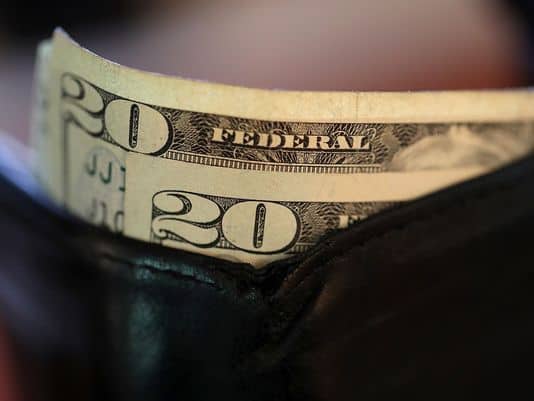
With a pledge of future profitability and an apology for past bad manners, Tesla CEO Elon Musk was upbeat in his conversation with analysts during a second-quarter conference call Wednesday.
Tesla shares soared as much as 11 percent in after-hours trading. The stock has been under pressure for some time as investors have worried about the cash the company was burning and whether it would be able to sustain its profitability.
The electric car maker’s second-quarter loss was wider than analysts expected, but the company backed its prior forecast that calls for profitable third and fourth quarters.
“From an operating plant standpoint, from onwards I really want to emphasize our goal is to be profitable and cash flow positive for every quarter going forward,” Musk said on the call. He added that recessions, or force majeure events could derail the plan but the goal is to be achieving positive GAAP income and cash flow “every quarter from here on out.”
Increased rates of production, improving margins, and cost cutting is helping Tesla hit its goal.
Here’s how the company did compared with what Wall Street expected:
- Losses: $3.06 per share vs. $2.92 per share forecast by Thomson Reuters
- Revenue: $4.00 billion vs. $3.92 billion forecast by Thomson Reuters
One big step it made was completing its major cost restructuring plan in the second quarter, the company said. Tesla had $2.2 billion in cash on hand at the end of the quarter, and expects its cash reserves to grow in the second half of the year. It also now expects to spend less that $2.5 billion in capital expenditures in 2018, far below the $3.4 billion it spent in 2017.
This quarterly update is a crucial one for Tesla. Investors have growing concerns about Tesla’s ability to be consistently profitable, reported quality problems with its cars, and overall demand for the Model 3, which is the company’s biggest bet by far.
Tesla said it produced 53,339 vehicles in the second quarter and delivered 22,319 Model S and Model X vehicles and 18,449 Model 3 vehicles, totaling 40,768 deliveries.
The company said in July it was able to repeatedly hit its target of producing 5,000 Model 3 vehicles per week.
Production, though, is many months behind schedule and the company has resorted to setting up assembly lines in temporary tent structures.
Tesla is now aiming for a 6,000 vehicle per week rate, which it hopes to achieve by the end of August. By year-end it hopes to ramp up to a rate of 10,000 per week. Musk said the company is still aiming to produce 1 million cars per year by 2020, but that a number closer to 700,000 or 800,000 is more likely.
Tesla’s total automotive gross margins rose slightly, fueled in part by a the fact that Model 3 gross margins turned slightly positive in the second quarter, over the previous quarter, but were down over the second quarter of last year. Tesla expects Model 3 margins to be 15 percent in the third quarter, still lower than the 25 percent target Tesla had set for the car. Tesla expects to produce 50,000-55,000 Model 3s next quarter, and deliveries should exceed that number.
The Model 3, a midsize sedan, is arguably Tesla’s most important product. Tesla is betting the sedan will help the company transition from a niche maker of high-end electric vehicles to a mass manufacturer. Tesla originally said it would sell the car for a starting price of $35,000, but it has up until made only higher-end versions of the vehicle to keep margins high.
In the quarter ended June 30, Tesla had a net loss of $717.5 million, or $4.22 per share, wider than its loss of $336.4 million, or $2.04 per share, a year ago.
Excluding expenses for stock-based compensation and other items, Tesla had a loss of $3.06 per share, compared with an expected loss of $2.92 per share, according to Thomson Reuters.
Revenue rose to $4.00 billion from $2.79 billion a year ago, and outpaced analysts estimates of $3.92 billion.
The company burned through more than $700 million in the quarter, a drop from the more than $900 million it spent in the first quarter. Many analysts think the company will have to raise fresh capital by the end of the first quarter of 2019.
But Musk has not wanted to raise capital. On Wednesday, he said he wants to focus on reducing Tesla’s debt, and reiterated that he has no plans to raise capital “at any point.”
“We certainly could raise money but I think we don’t need to and we — yeah, I think it’s better to — it is better discipline not to,” he said.
He said the company will fund its China factory through a local Chinese bank.
Tesla seems to have taken another step toward getting its finances in line by recently hiring a new chief accounting officer.
Despite turning its attention toward improving its financial health, Tesla is still making investments in tech. Musk said on the call that a Tesla is very close to finishing a custom-built on-board chip for autonomous driving that would replace those currently offered by suppliers such as Nvidia. This new system will cost about the same as those currently installed in Tesla vehicles but will be far more powerful.
Musk’s behavior showed more restraint on the conference call than he had last quarter. Tesla took its first questions from two analysts whom Musk had dismissed three months earlier, when the company reported first-quarter results. On that earlier call, Musk had referred to the questions that the analysts were asking as “boring, bonehead questions,” and as “dry,” and chose instead to take several questions from a retail investor via YouTube.
“My apologies for not being polite on the prior call,” Musk said, blaming his behavior in part on a lack of sleep and overwork.
“I appreciate that,” said Bernstein analyst Toni Sacconaghi, in response. “Thank you.”
























